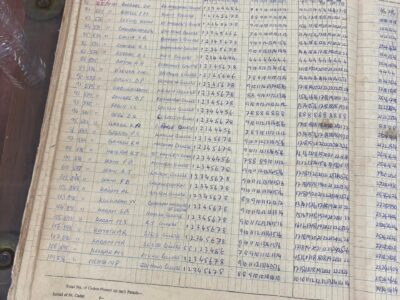
In my youth, I wrote hundreds of letters to friends, lovers, relatives, and the authorities. I was a prolific letter-writer and still possess several files with the replies I received from my addressees. I loved writing long-hand and expressed my ideas and my opinions freely on foolscap with a fountain pen before sending it along to my pen-friends, some of who responded and with whom I carried on a correspondence for years later. They were indeed the best of times.
When I write nowadays, I edit my document a dozen times post ipso-facto, painstakingly correcting every small grammatical and syntax error, adding, deleting, or modifying words, adjusting the tone, changing the sequence, inserting notes and explanations, making paragraphs, and generally playing around with it until I am satisfied. In the end, of course, it is well-nigh impossible to discern the original from the final version, and unless you have read the first draft, or have delved into the ‘edit history’ (that too, possible only on Facebook, not on my blog), the lay reader would have no idea that they are reading a highly modified, scrubbed, and cleansed version of the initial uncut prototype.
While this has its advantages, I think it also makes it all too smooth around the edges, too polished to a mirror-like finish, too pat, too, how should I say it, boring. It loses the human touch. It could have come from me. Or from ChatGPT. No way to tell, really. Everything fits. Everything is in its right place. Every word matches. It is perfect. Indeed, it is too perfect. It is not human. And it gives off an eerie feel of an unearthly, alien origin. It also diminishes the document’s value from a historical perspective since there is no way for anyone reading it years later to determine what the author’s original looked like at all.
As I mentioned, before the advent of the Internet, when we wrote things down, it was on paper using a pen. That would mean that any mistakes would need to be corrected by simply crossing the erroneous word (a straight line) or letter (a slanting one) out and re-writing it, any omissions would need a small mark (we used an upside down ‘Y’ and called it ‘hen’s feet’; apparently, it should be an upside down ‘V’ and it is called ‘Caret’, as I learnt later), and any faults remaining would simply stay, as a reminder that the author of the said writing was a flawed person prone to making mistakes, indeed that they were human.
Sometimes, I miss those days.
P.S.: In recent times, all the writing I have done is to make to-do lists for myself and inscribe books and gifts for other loved ones. I have found myself making deliberate(?) mistakes just to be able to cross out a word or letter. I think it makes it more memorable too!


















